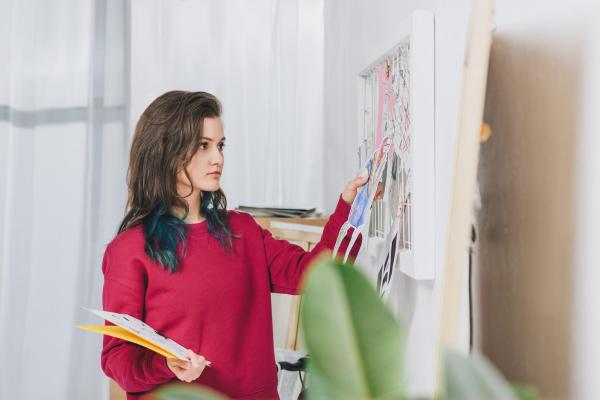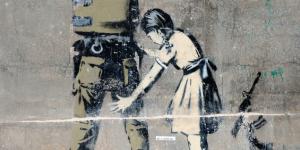What Is a Mood Board and How Is It Made?


Many of us think of being creative as something which you either are or you aren't. This gives the false impression that many creative people don't have to do any work and everything they do is easy. While there is great variation in terms of dedication and work ethic, the general rule is completely false. Anyone who wants to succeed in any given medium needs to put the work in. Being creative can be especially difficult as we often need to create something from nothing. This is why using tools such as a mood board can greatly help.
However, it is wrong to think that a mood board is only for creatives. You will see why it is a helpful application for almost anyone as oneHOWTO asks what is a mood board and how is it made?
What is mood board?
The term mood board can be defined loosely as a ‘wall of inspiration’. Each mood board is different from each other and is designed by its creator. Essentially, a range of images are attached to a large board or wall which allows us to break one large idea or project into its component parts. It is essentially a collage which pertains to your current project and helps you to refine your ideas by bringing together their inspirations.
While we often find mood boards are beautiful in and of themselves, this is not their point. Neither are they the same as a storyboard or chart which seeks to define the specifics of a project. Mood boards are built with clippings, magazine cut outs, photographs, textures, colors, fabrics swatches, text or whatever it is you want to use to build inspiration.
This inspiration is designed to be beyond mere aesthetic. It needs to represent your intention and does not seek to make definitive decisions. For example, if you are thinking of redecorating your house, you may have the idea that you want it to reflect classical roman architecture. This doesn't mean you can't put in colors, designs, words or other sources of inspiration which don't represent classical Roman architecture. They simply have to contribute to the mood you want to set.
Although this tool can be used by anyone, it is commonly used in design. Such professions include architects, interior designers, graphic designers, illustrators or audiovisual engineers. This is partly because it is a visual medium. It helps to bring ideas together through juxtaposition and idea mapping.
However, mood boards can be used by almost anyone for almost anything. Writers can use it to influence their stories and musicians can use it to plan a song. But creatives are not the only people who can experience the benefit of a mood board. If we are having a period of dullness in our lives, a mood board can be a good way to inspire us to get out of our funk. We can even use it for dating and relationships to help us see where we want to be. We can simply use it to bring our mood to the place we want it to be.
What is a mood board used for?
Mood boards are becoming increasingly popular and there are many people who want to start applying them in their day to day life. In saying this we need to point out that a mood board is an exercise and resource, but not an artistic product in itself. The purpose of this technique is to help us in our creative or personal processes, not to be the solution in itself. With this in mind, we look at what mood boards are used for:
- To clarify ideas: sometimes we can believe that we have an idea, but we can't seem to grasp it clearly. Often it is vying for attention with other thoughts and ideas in our head. A mood board helps us untangle this net of ideas and clarify them more succinctly.
- To ground our impressions: it is often the case that we have something in our head, but we cannot give it shape. With this technique, you can begin to give shape, texture and color to any idea that wants to come out.
- To define our creativity: the world of art is abstract until we dare to shape it. This creative tool helps us define and refine our next creation.
- To be able to say what our style is: we have many styles and fashions within our reach that can give us more or less, but what is truly valuable is knowing what our own style is and what we feed on when creating it.
- To obtain results and improve our ideas: if you work in the creative world, the mood board is an ideal tool to be able to communicate with other people and optimize time and results. We may be stuck on an idea and cannot see how to work it out. The mood board can help bring us back to our main goal or even make suggestions for where to take it.

How to make a mood board
Whether you want to use your mood board for professional or personal projects, the process is very similar. Each resultant mood board will be unique and tailored to your ideas, but the basic principles are the same. We simply need to adapt them to our specific needs. The basic process of making a mood board is as follows:
- Define the title/objective of the project: the first thing you should ask yourself is what you want to do and what is the objective. To do this, define a project name and manage a few keywords for the search. It won't be the final result, but it will be the direction in which you are heading. You cannot make a successful mood board without knowing the ‘mood’ you want to create.
- Start collecting: with the title and the objective in place, start collecting and searching for all kinds of resources. These can be colors, patterns, photos, texts or anything which helps you reach your objective.
- Choose your board and where you want to put it: once you have the images, objects or media, you must choose where you want to put them. You can use a simply cork board, an unused whiteboard or even just a wall. Attach you objects and ideas appropriately, e.g. don't damage the wall if it is not yours. Don't think too much about placement of the objects, let your mind go when putting them up.
- Refine and define: once you have all the elements selected, you will have to filter and select those that most convince you. You can move ideas around, compare some with others or mix it up freestyle. You can generate several versions to later be able to keep the best of all of them.
You can also make a digital mood board on your computer. Use a program which allows you to put images and text together, even if it is as basic as the Microsoft paint application. Then do the same as you would with the practical whiteboard. The benefit is that it a digital mood board cheaper and easier. There are drawbacks when compared to a practical mood board. This is because you have to keep accessing a digital mood board, but a practical one will remain in your workspace or living area and help influence you more subtly.
If you want to read similar articles to What Is a Mood Board and How Is It Made?, we recommend you visit our Learning category.





